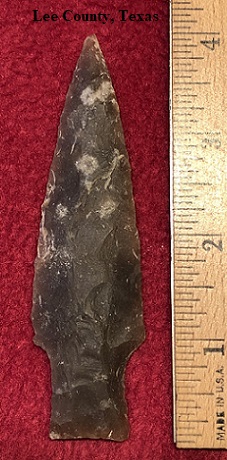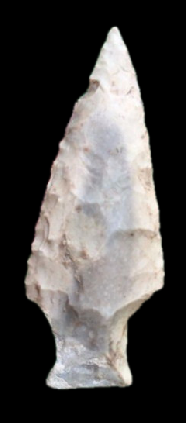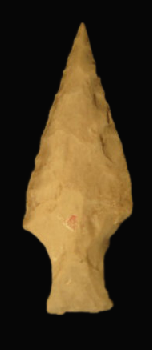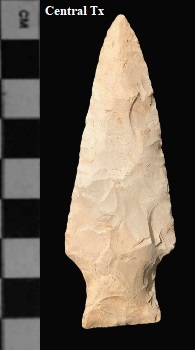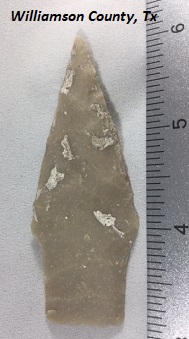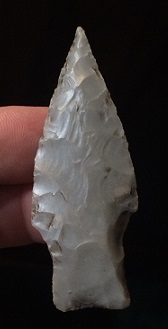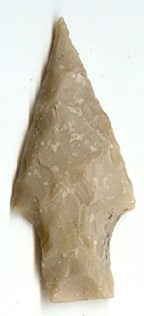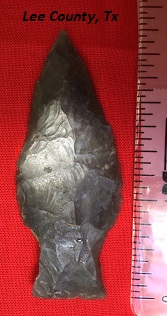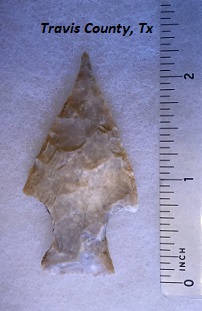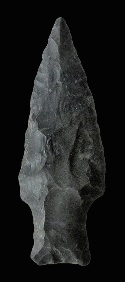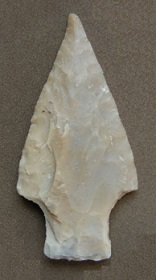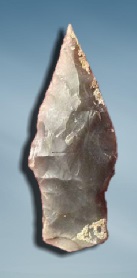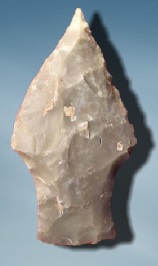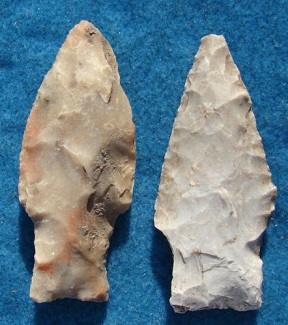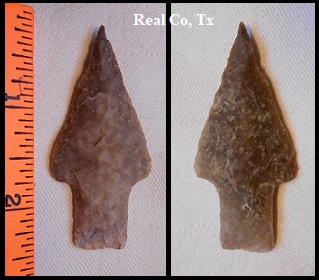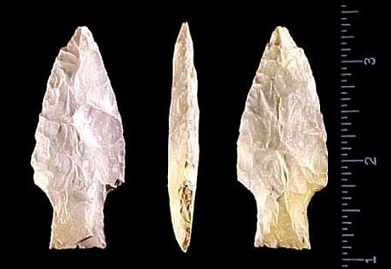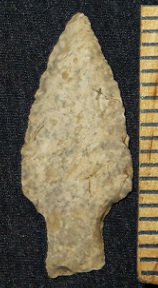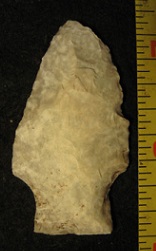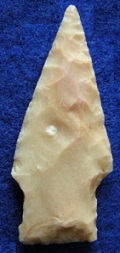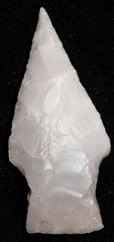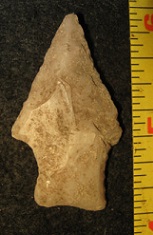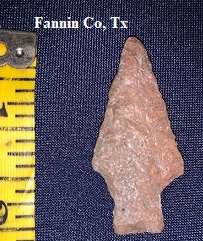Name Details:
Named By: C. N. Ray
Identified / J Charles Kelly Named (see additional comment regarding C N
Ray)
Named For: Clear Fork Aspect / County in Texas
Date Identified: 1938 / 1947
Type Site:
Nolan
AKA: Clear Fork Darts 1 and 2 (Ray, 1938)
Cluster:
Commonly Utilized Material:
Date:
Cultural Period:
6,000 - 4,000 B.P.
Middle Archaic
Middle Holocene
Clear Fork Culture
Glacial Period:
Culture:
Outline is Representative of Size and Shape:
Description of Physical Characteristics and Flaking Pattern:
This is a medium to large
(typically 2 to 3 inches) triangular stemmed point with a flattened to elliptical cross section. The blade is primarily excurvate
or slightly incurvate, rarely straight.
The tip is commonly referred to as "needle like". The shoulders are sloped
upwards to rounded and are commonly asymmetrical. The stem may vary from straight to slightly expanding. The stem for this
point has beveling one side of each face which is unique to this point.
Beveling is most common on the right edge, occasionally the left edge,
but the blade is rarely beveled. The stem is commonly straight,
but may vary to slightly expanding, but rarely slightly contracting. This point has a random flaking pattern.
Size Measurements: Total Length - 45 to 135 mm, Stem Length
- usually uniform at 20 mm from top of curve to base. Width - 20
to 40 mm, Stem Width - 11 to 30 mm. (Suhm and Krieger,
1954).
Distribution:
Distribution Comments:
These points are most commonly found in central Texas
up to the Brazo rive to the Rio Grande Valley and Lower Pecos River
extending eastward to the central coastal region of Texas and northward
into the Red River Valley of Oklahoma.

Additional Comments:
This point as originally called the Nolan Bevel
Stemmed. The name was shortened to Nolan in 1954 when the point was
described in greater detail by Dee Ann Shum, Alex D. Krieger and Edward B.
Jelks.
C. N Ray referred to these points as Clear Fork Dart 1 and 2 points based on
his study of the Clear Fork Focus which included the Clear Fork Gough in his
1938 publication. J. Charles Kelly approached Dr. Ray regarding this
type and he was unable to determine the distribution of this type.
Kelly renamed this point Nolan Beveled Stem in his 1947 publication (Kelly,
1947).
Other points in this Cluster:
Point Validity: Valid Type
Kelley was a distinguished
anthropologist who served as Curator of the Archaeological Museum at the University of Texas-Austin and was instrumental in setting up the Department of Anthropology at the University of Texas-Austin. He specialized in the archaeology of western Texas. This type was named in a professional publication and has many professional references. This is considered a valid type.
.
Age Details:
References: (See Reference Page, Entry Number):
8,
23, 30, 115, 177, W11
Nolan Projectile Point, Nolan Arrowhead
